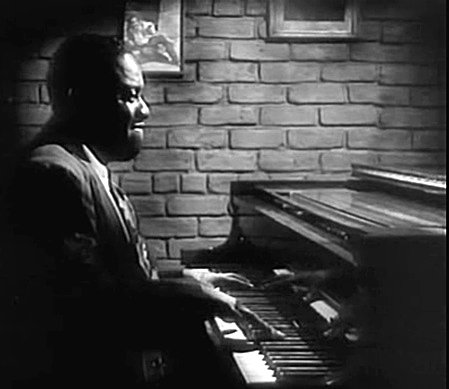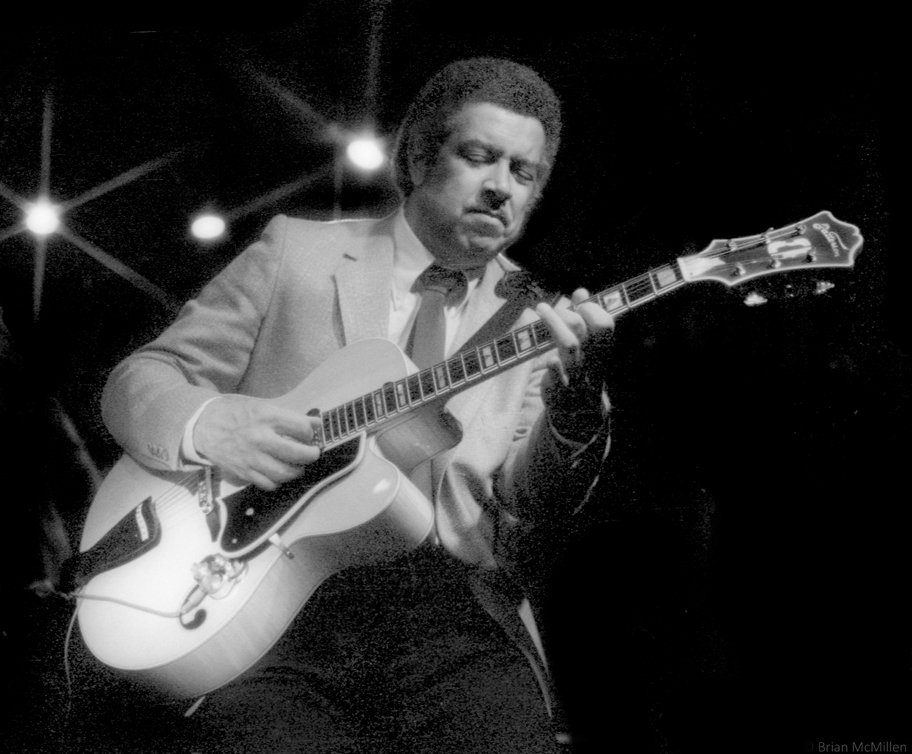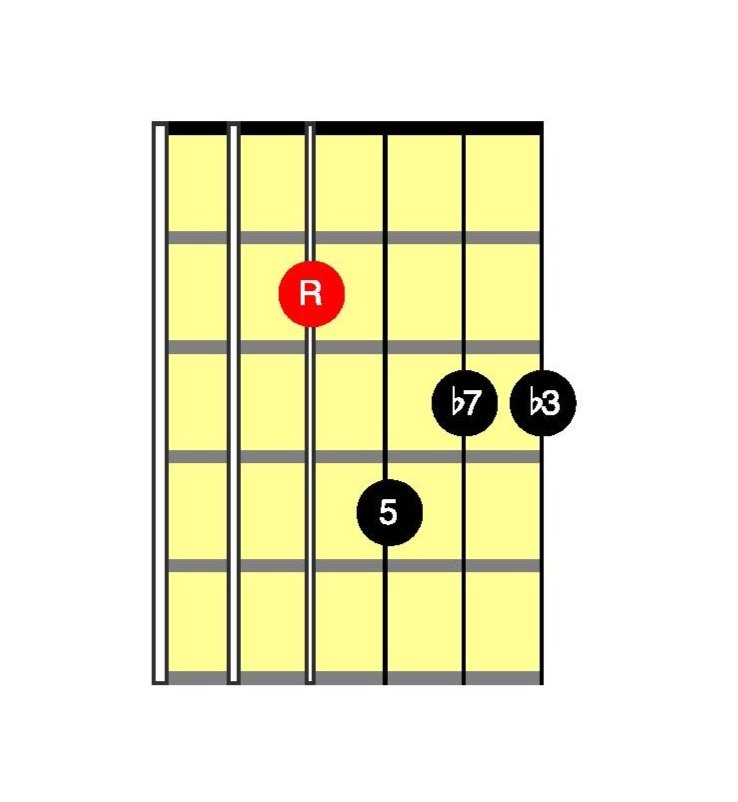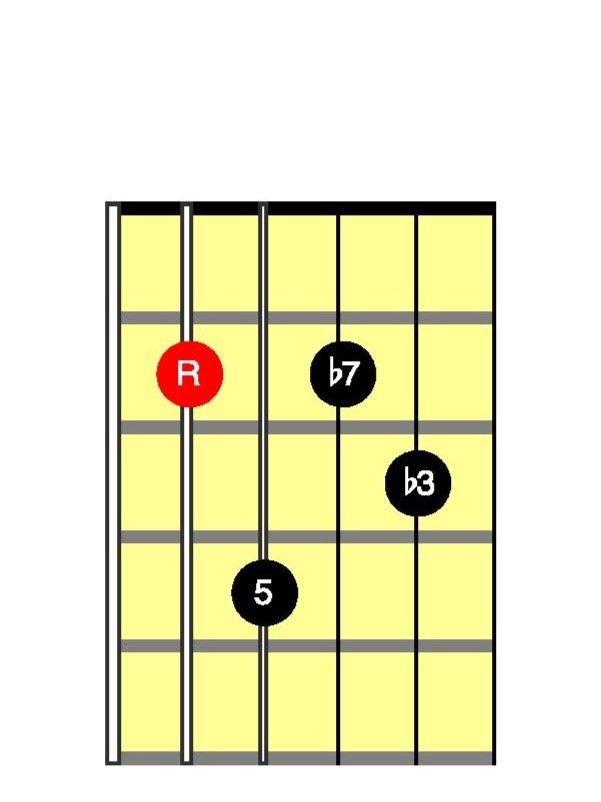Chord Melody in Jazz Guitar
For the jazz guitar players and listeners out there, many would have heard this style of playing before as it can be found in numerous recordings. A lot of learners aspire to play chord melodies on the guitar to get one step closer to sounding like their favourite jazz players on the instrument. Let’s dive in and have a look at what this type of playing is, why it is used particularly often in jazz guitar, and perhaps most importantly - how to play chord melody!
What is Chord Melody?
As with most English phrases, the definition is quite literal - chord melody is a combination of a chord and a melody. More specifically, it is playing a single note melody whilst putting chords underneath, thereby harmonising the top note. The reverse way of thinking about this is to just play chords but keeping a particular note on top which acts as the melody, and in doing so changing the voicing and arrangement of notes.
Chord melody is easily recognised on piano - imagine walking into a dimly-lit cocktail bar and right by the side of the lounge is a lonely jazz pianist playing solo without other musicians. In that context, it would sound too thin in terms of texture if only a single line melody were ever played. Similarly, if only chords were played it would sound like something is missing on top, as if the pianist is accompanying nobody, almost like a backing track in real life. Combine those two scenarios together and you have chord melody playing!
Listen to Art Tatum performing his solo jazz piano rendition of Yesterdays. Even the first 10-15 seconds clearly explains the idea!
Playing chord melody on the piano is arguably easier as there are more notes available whereas on the guitar we are limited to six notes maximum with the number of strings. Playing all six strings together can often sound muddy and too loud, like an amateur strumming big, open chords to pop songs such as the opening chord to Wonderwall by Oasis. Although chord melody on the guitar is more difficult, it is not impossible. You may have already heard instrumental versions of songs being arranged on the acoustic guitar - that is a type of guitar chord melody arrangement. However, chord melody in jazz guitar (especially electric guitar and solo guitar playing) doesn’t sound as smooth or pure as chord melody arrangements for guitar; those relaxing fingerstyle playing best heard in a massage parlour or on the beach.
What are the Reasons for Playing Chord Melody?
The primary reason for learners to play chord melody is usually that it sounds beautiful and cool. It is a distinct feature of the jazz guitar playing style which cannot be avoided entirely if you want to move up the jazz ladder. From my personal experience, I reached a point where I was able to improvise and solo (play melodies on the spot) over a few jazz standards and accompany others by playing the chords, but it felt like something was missing especially towards the end of my solos. A large part of my learning involved listening to recordings by the best artists, and in the world of jazz guitar the masters would often play chord melodies in order to build in the climax sections. Looking back, I see it as wearing a badge of honour once a guitarist is able to comfortably pull off a jazz chord melody section. It can be viewed as a big step up!
There is the more technical reason of filling out space, depending on the musical setting. Guitar players often played in trio settings with double bass and drums, meaning only one guitar is available to play in the wide sonic range left unattended unlike if there was a pianist or trumpet taking the responsibility of chords or melody separately. This is a musical consideration which requires the understanding of sonic elements in a band setting.
Listen to Kenny Burrell play In A Mellow Tone with his trio band. Fast forward to 4:44 to see the climax section.
For the players who are going it alone without a band, chord melody playing is essential rather than desired, simply because of the context like the ‘solo jazz pianist in a jazz club’ scenario mentioned above. Without the backing and support from another rhythmic or harmonic instrument like the drums or piano, the solo guitarist assumes all responsibilities of rhythm, harmony, and melody, often playing a mixture of them.
Listen to Kenny Burrell perform his solo jazz guitar rendition of There Will Never Be Another You. Or check out my student Samson playing the same song at a faster tempo!
How to Play Chord Melody on Guitar
It is always easier and more straight-forward to try out concepts on an actual tune, rather than learning all the potential shapes without putting them to good use. The knowledge will always be applicable in another tune or playing context, with stronger memorisation too.
Take the standard Fly Me To The Moon popularised by Frank Sinatra’s recording. You need to know the melody and the chord (and the rhythm if you want to play it correctly in time).
Learn the melody as usual, but try to play it on the 1st and 2nd string. This is because a few notes will need to be added below the melody to form the chord. A few notes on the guitar means a few strings.
In this song, most chords are 7th chords. For example, the first chord A minor 7th (Am7) consists of four notes - the 1st (root), 3rd, 5th, and 7th. In other songs there may be extended chords like A minor 9th (Am9) which has five notes theoretically - 1, 3, 5, 7, 9. Later on, we will omit some unimportant notes such as the 5th, which doesn’t make any difference to whether the chord is a major or minor tonality, and doesn’t mess with the desired extension such as the 9th or 11th.
Once the melody is in place, now is the time to put chords to them. Keep it simple to start with by targeting the strong beat where the chord changes, i.e. the first beat of each bar. We can also simplify the rhythm of the melody to exclude any syncopations or embellishments so we are hitting the right note with the right chord at the right time.
Here is the score for Fly Me To The Moon with simplified melody in basic rhythm.
Which notes do we add beneath the melody then? A good way to find out is to know what number the top note is. In the case of this song, the first 8 bars always feature the 3rd note of the chord (on the first beat of each bar). Now we know that we need to add the 1, 5, and 7. To make the top note stand out as the melody in a chord, there is a particular order of the notes in what’s known as Drop 2 voicing… to be explained another time. P.S. Doing this analysis often reveals compositional techniques and elements of songs! In this case, there is a heavy focus on hitting the third note of each chord.
Here are the first two chords of Am7 and Dm7.
Am7
Fingering: 1 - 4 - 2 - 3
Put root note A on the 7th fret.
Dm7
Fingering: 1 - 3 - 1 - 2
Put root note D on the 5th fret.
Notice that some of these are familiar barre chord shapes i.e. Dm7 and Cmaj7. The same rules apply when it comes to moving a shape up and down the strings - it does not change the chord itself, only transposes the key. That makes it so much easier to learn as there are only a limited number of shapes. For example, the first chord shape of Am7 with the flattened third on top can be moved up 3 frets to become a Cm7, suitable for Autumn Leaves!
Cm7
Re-use the same Am7 shape from above, but move the root note C up to the 8th fret.
Now the top note will be Eb.
Here is the score for Autumn Leaves chord melody.
In the above examples I included chord diagrams with specific numbers within the notes. This way we know that the shape is fixed (meaning the numbers don’t change in relation to the other numbers in the shape) and that it is easy to transpose it up and down. Not having the fret number right beside the shape prevents us from memorising one chord in one particular position, putting emphasis on learning the shape rather than the position itself associated with a letter name.
Also, I included a score in standard notation without TAB. The musical notation allows us to see rhythm, harmony, and melody all at once, as well as to calculate the degree names (notes in relation to the chord) and assign appropriate numbers. TAB, in my humble opinion, is bad. It defeats the purpose of learning the right way… topic for another time!
For a full comprehensive overview of minor 7th Drop 2 voicings on the guitar to get you started with playing chord melody, download the free PDF here. Here is the one for major 7th chords.
Finally, for motivation or inspiration, check out the go-to solo jazz guitarist Joe Pass playing Summertime, or get in touch via the contact form (or give us a ring!) for some jazz guitar lessons in Leeds.








